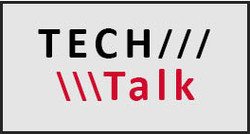 Homes, workplaces and other public settings are indoor environments that may harbor organisms responsible for allergen production and allergen accumulation. As pest management professionals, we may be asked by our clients to rid those environments of allergens when health professionals prescribe the reduction and elimination of occupant exposure to allergens. Through understanding allergens and their sources, successful pest management strategies can be devised and implemented that may ultimately decrease the risk of allergy sensitivity to individuals in those environments.
Homes, workplaces and other public settings are indoor environments that may harbor organisms responsible for allergen production and allergen accumulation. As pest management professionals, we may be asked by our clients to rid those environments of allergens when health professionals prescribe the reduction and elimination of occupant exposure to allergens. Through understanding allergens and their sources, successful pest management strategies can be devised and implemented that may ultimately decrease the risk of allergy sensitivity to individuals in those environments.
What are Allergens?
Allergens are biological or chemical substances which, upon exposure, cause allergic hypersensitivity immune responses. Exposure mainly occurs through skin contact, inhalation or digestion of the allergen. Immune hypersensitive responses range from welts and rashes to anaphylaxis to rhinitis and asthma episodes. The immune system of sensitized individuals identifies the allergen (the trigger) as a foreign substance and over reacts to its presence, hence hypersensitivity. Individuals may be sensitive to a specific allergen or an array of allergens. Effective control of environmental triggers, such as cockroach-derived debris, can have a substantial impact on controlling occupant allergic responses.
The biological origins of allergens include pollens, spores, grasses, nuts, fungi, enzymes, birds, mammals and arthropods. Stinging and biting insects immediately come to mind when discussing allergic immune responses. Wasps, yellow jackets, bees, hornets, fire ants, stinging flies, horse flies and fleas are often targeted as pests that have the potential to trigger an immediate immune response.
Other pests such as house dust mites, bed bugs and rodents may be responsible for allergen accumulation within homes and businesses. Not only does direct contact with the allergen-producing organism trigger such responses, but dust, which contains fragments of insect body parts and insect/rodent fecal materials, also can cause major allergic reactions. Materials associated with living (as well as dead) cockroaches and mice have been identified as major sources of allergens when these materials are aerosolized during daily routine activities in multi-family housing facilities.
The service professionals of the pest management industry are a valuable resource in lowering the incidence and prevalence of allergic reactions to environmental triggers. Eliminating targeted pest populations removes allergen-producing organisms. Inspections, monitoring and client education are other important steps in an allergen avoidance program. If offered, sanitation services to remove accumulated dust and fecal debris will enhance efforts to lower the risk of occupant exposure to allergens.
In the Summer.
In warmer months, proactive inspections to find potential harborage sites for wasps, followed by exclusion methods, such as caulking, will make such sites unsuitable for nest-building, which ultimately reduces the risk of wasp stings. Similarly, identifying public trash and recycling receptors and hollow metal gates in animal enclosures as potential sites for yellow jackets will enable an inspector to follow up with services that will prevent those sites from becoming active foraging and nesting sites. In addition to traditional pest prevention and removal services, sampling environments for future analysis to identify and quantify house dust mite allergens and fungal-produced allergens may be an additional source of revenue. As with any IPM program aimed at allergen source reduction and elimination, documentation is an essential step towards providing both preventive and corrective pest services in order to lower risks associated with allergic sensitivities and the presence of allergen-producing organisms.
The author is a co-owner at Dodson Bros. Exterminating, Lynchburg, Va. Her doctorate focused on environmental allergens; she also has a master’s degree in entomology from Virginia Tech. She is a former technical manager at the National Pest Management Association.
Copesan is an alliance of pest management companies with locations throughout North America. To learn more, visit www.copesan.com.
